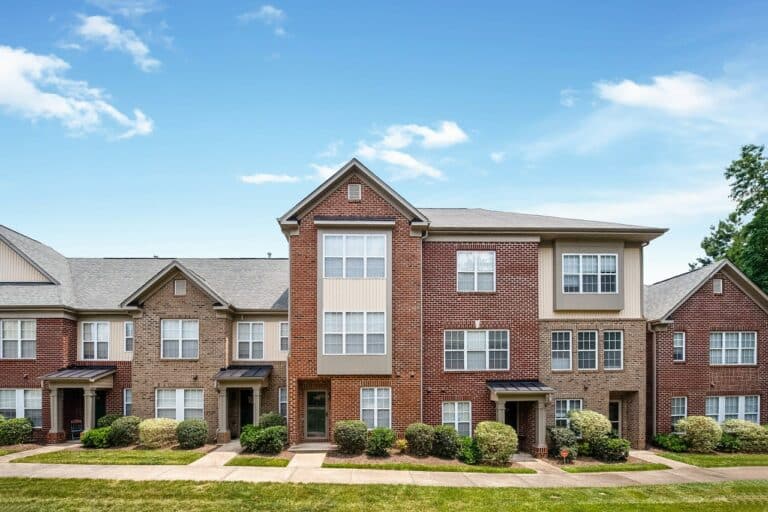1. Introduction: The New Challenges of the Modern Rental Market
The rental property landscape has evolved significantly over the past decade. Rapid growth in real estate investing, coupled with shifting economic conditions post-2020, has led to a more competitive environment for landlords and property managers. Large institutional investors have entered the market with deep pockets for acquisitions and sophisticated management techniques, pushing independent owners to elevate their performance just to keep pace. Rising interest rates, increased tenant expectations, and legislative complexities have also contributed to an environment that, for many owners, is no longer as profitable as it once was.
Given these challenges, performance—the ability to generate solid and consistent returns—has become the single most critical differentiator in today’s rental marketplace. While nearly anyone can list and rent out a property, very few can do it extremely well. The margin between success and stagnation rests on the quality of management, the extent of property upkeep, and strategic decision-making. Without a strong grip on these factors, rental owners risk an underwhelming return on one of the most significant investments they will ever make.
2. Why Performance Matters More Than Ever
Shifting Market Dynamics
In the years following 2020, rental markets in many regions saw a surge in demand. At the same time, the supply of rental units—particularly quality units—tightened. This supply-demand mismatch opened the door for new entrants, including large Wall Street-backed firms. When large players manage rentals with professional polish, smaller independent owners need to work even harder to remain competitive.
Investor Expectations
Both novice and seasoned investors often rely on spreadsheets and projections to determine the viability of buying and holding properties. Unfortunately, these spreadsheets typically assume ideal conditions: stable occupancy, minimal maintenance costs, and minimal management overhead. The reality can be very different. Underperformance, driven by high vacancy, frequent turnovers, or poor maintenance standards, erodes cash flow and demolishes returns over time.
Reputation and Retention
Tenants in today’s market have more tools than ever to evaluate potential rentals. Reviews, online listing photos, and transparency around leasing processes all play an enormous role. Simply being “good enough” is no longer sufficient. Properties need premier presentation, rapid response to inquiries, and a fair but firm set of leasing standards to attract the best residents—ones who pay on time, keep the home in good condition, and renew their lease when possible.
3. The Hidden Costs of Underperformance
What does underperformance look like in real terms? It is often a combination of:
Underperformance is not just a short-term hindrance—it compounds over time. Imagine a property that rents for $1,500 but remains vacant one month per year. That vacancy alone results in a potential $1,500 x 12 = $18,000 annual gross, minus $1,500 for the vacant month, or $16,500 effective gross revenue. Over several years, the cumulative difference can be substantial, especially when factoring in the opportunity to reinvest or upgrade the property.

4. Key Metrics That Drive Rental Property Success
A few numbers serve as critical barometers for a rental’s health:
5. Comparing Common Management Scenarios
Consider two generic scenarios for a rental property that highlight the difference between mediocre and great management. While these are simplified hypothetical examples, they illustrate how performance compounds over time.
Scenario A: “Great Management”
With diligent oversight, a property manager who charges a higher percentage might still deliver superior net cash flow. Why? Because they minimize vacancy by pricing competitively yet accurately, address repairs quickly, and treat existing tenants well to encourage renewals.
Scenario B: “Alternative Management”
At first glance, Scenario B looks cheaper on the surface—only 5% in management fees. But consistently underpricing the rent by 15% leaves money on the table each month, and a 30% higher vacancy can reduce the annual rent drastically. Over a five- to ten-year horizon, the property in this scenario may generate significantly less total income than the well-managed property charging a higher fee.
Even with identical maintenance percentages, the property in Scenario B fails to reach the potential net income that Scenario A achieves. Some owners see only the management-fee line item and mistakenly assume they’re saving money; in fact, the real “cost” is much steeper because of the missed income from underpriced rents and higher vacancy.
6. The Domino Effect of Great (or Poor) Management
These performance factors often snowball. For example:
The opposite is also true: underperformance creates a domino effect of bad results. A property in disrepair attracts tenants with spotty payment histories, who are more likely to leave after a short lease term or cause damage. That leads to increased turnover, decreased revenue, and an inability to afford key improvements. The longer this cycle continues, the worse the property’s reputation and profitability become.
7. Maintenance and Repairs: A Long-Term Investment
One common misconception is that maintenance costs are a burden owners should minimize at all costs. In reality, quality repairs and upkeep are a form of long-term investment. Major issues like roofing leaks, plumbing failures, or outdated HVAC systems can escalate if ignored, leading to far higher repair bills in the future. Moreover, well-maintained properties command higher rents and lead to more stable occupancy.
Even with a standard maintenance budget of 10%, there will likely be major turnover costs every few years as tenants move on. Painting, deep cleaning, or replacing worn-out appliances can easily cost thousands. Planning for these expenses rather than being caught off-guard is a hallmark of a great landlord or management company. Preventative maintenance can reduce costly surprises, keeping budgets intact and tenants satisfied.

8. Vacancy: The Silent Profit Killer
Every vacant month reduces gross rent by 8% annually if you assume a property rents on a 12-month schedule. For instance, a $2,000 per month rental loses $2,000 each vacant month—$2,000 is 1/12th of its annual gross potential of $24,000, which is roughly 8.3%. This is nearly the same percentage that many owners set aside for annual maintenance. In other words, a single vacant month can wipe out the year’s maintenance budget in lost revenue.
This reality underscores why top-tier managers are obsessive about minimizing vacancy. They focus on:
Even if a property manager charges a higher fee, if they can reduce the time your property sits empty each turnover, they effectively pay for themselves by preserving the bulk of that gross rent.
9. Why Good Presentation and Tenant Quality Matter
Presentation
The modern renter begins their search online, often scanning dozens or even hundreds of listings. If the photos and description do not make a strong first impression, prospective tenants will swipe to the next option. Great managers know the power of staging, high-quality photography, and compelling listing descriptions that highlight a property’s best features.
Tenant Quality
Beyond photos, the screening process for incoming renters is vital. The best property managers do not cave on credit or income requirements simply because it might be harder to find a tenant. They understand that a wrong tenant can cost more in the long run through missed rent, property damage, or frequent turnover. Strict standards might mean fewer qualified applicants in the short term, but the long-term benefits of reliable, high-quality occupants far outweigh the inconvenience.
10. Insights from the 2025 Buildium Property Management Report
According to the Buildium State of Property Management Report for 2025, only 35% of rental owners say their rentals are performing well. This is a stark admission that nearly two-thirds of owners are experiencing underperformance to some degree. The reasons given in the report vary—lack of investment in renovations, poor management, inability to keep up with local regulations—but the bottom line is the same: a large portion of the market is struggling to achieve meaningful returns.
Notably, the report emphasizes that owners who invest proactively in both their properties and their management practices tend to outperform the rest of the field. This aligns with real-world examples: the most profitable owners are those who:
1. Keep up or exceed market standards for property condition.
2. Price their rentals correctly.
3. Minimize vacancy through effective marketing and quick turnarounds.
4. Handle repairs swiftly and maintain strong vendor relationships.
5. Re-evaluate their approach regularly to adjust to changing market conditions.
11. How We Consistently Achieve High Performance
(While this section provides a framework for how one might approach high performance, it is presented in a general sense to maintain a universal tone.)
Despite an environment that is increasingly challenging for owners, it remains possible to produce incredible five-year cash flow statements with strong income, low vacancy, and manageable costs. Here are the core pillars of an approach that consistently outperforms the market:

1. Premier Presentation
2. Strategic Pricing
3. Tenant-Centric Focus
4. Obsessive Vacancy Reduction
5. Maintenance Discipline and Vendor Relations
6. Investment in Upgrades
7. Investment in Upgrades
8. Flexibility and Adaptability
Because of these practices, it is extremely rare that an owner’s rental fails to perform well under our model. In many cases, when a property does fall short, it can be traced to years of deferred maintenance or insufficient capital investment prior to our involvement. Even then, once the property receives the appropriate attention, performance usually rebounds.
12. Conclusion
The modern rental market is undeniably tough. Large corporate players, higher tenant expectations, fluctuating economic conditions, and mounting costs have put enormous pressure on rental owners. According to the 2025 Buildium report, only 35% of owners feel confident about their rental performance—meaning that for most, achieving consistent, substantial returns is a real challenge.
Yet, as the data and examples show, underperformance is not inevitable. By focusing on the right metrics—occupancy, correct rental pricing, minimized turnover, proactive maintenance, and diligent management—properties can thrive regardless of external pressures. The key is understanding that the difference between merely listing a home and actively managing it to its fullest potential can mean tens of thousands of dollars in revenue over just a few years. This difference compounds over time, making the gap between mediocre and great management more pronounced with each passing year.
Great managers treat a rental property like a high-stakes investment deserving of strategic oversight and well-timed improvements. They understand that vacancy is the silent killer of annual income and that every month a property is empty equates to a large percentage of lost revenue. They also realize that strong tenant relationships, vendor alliances, and a professional approach to listing and pricing a unit are not optional niceties—they are the backbone of long-term profitability.
If you’re an owner who has been struggling with high vacancy, ongoing turnover, or disheartening net income statements, it is worth taking a closer look at your property’s performance factors. Are you investing enough in your property to keep it attractive to today’s discerning renters? Are you aligning with a management approach that relentlessly pursues peak performance? Are your expectations for vacancy, turnover, and maintenance realistic, and are they matched by the practices of your management team?
No single solution guarantees immediate results, but a rigorous, strategic, and proactive mindset will position you to capture the best possible outcomes—even in a market that has grown more complex and competitive than ever before. Performance truly matters. In an era where only a minority of property owners report strong returns, those who elevate their management practices stand to benefit immensely from both short-term cash flow and long-term property value appreciation.












